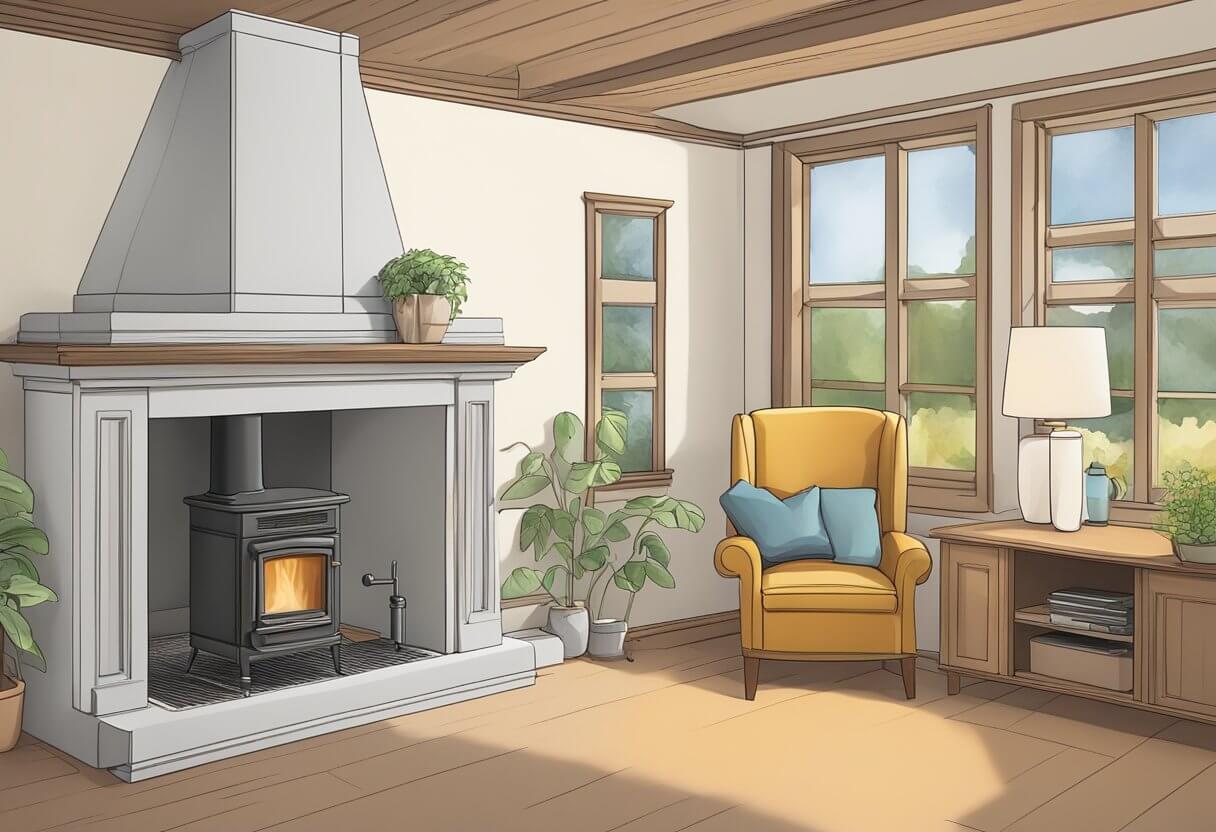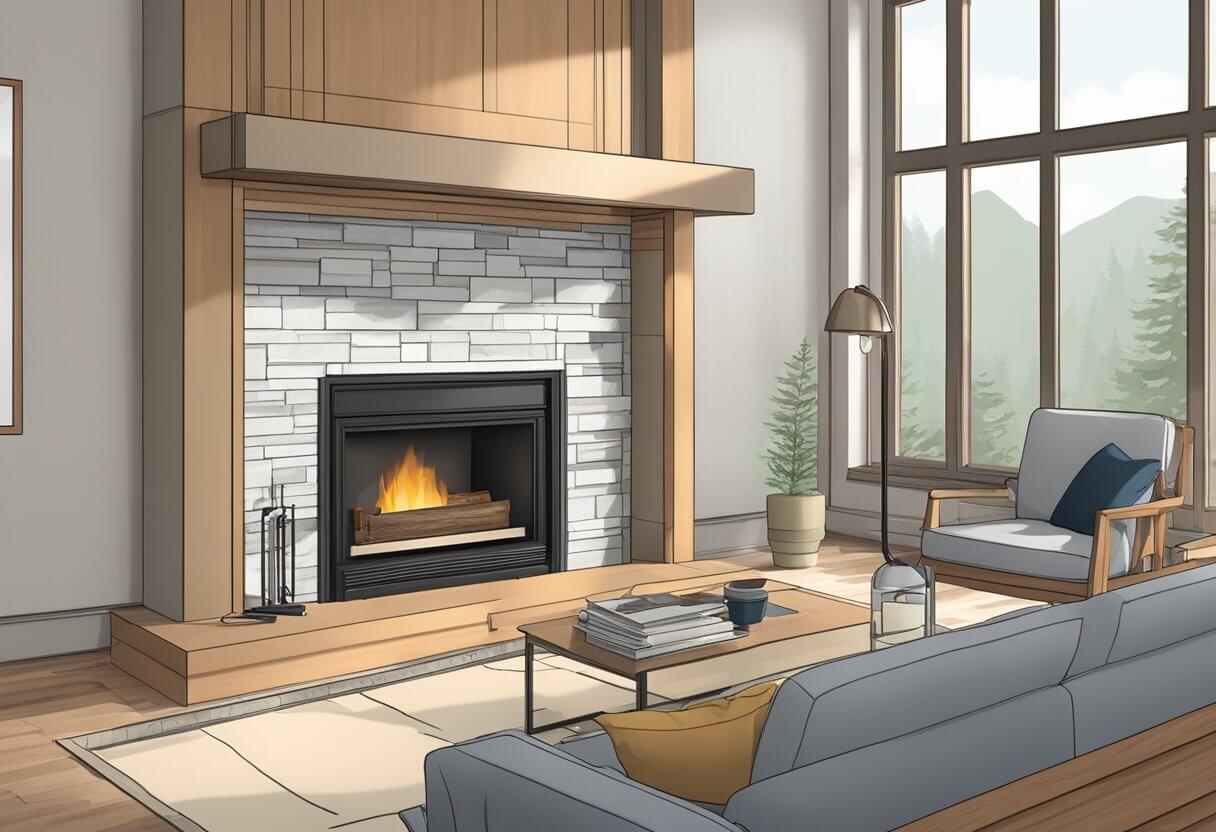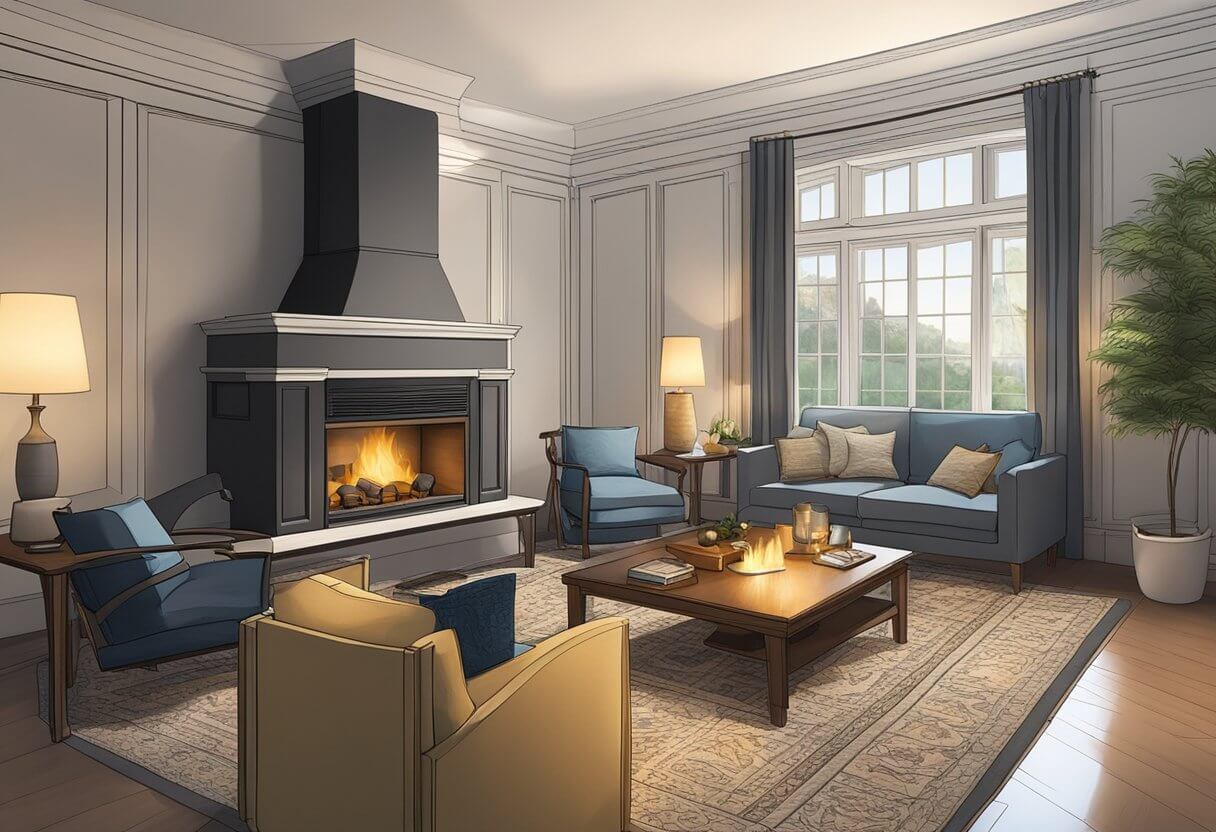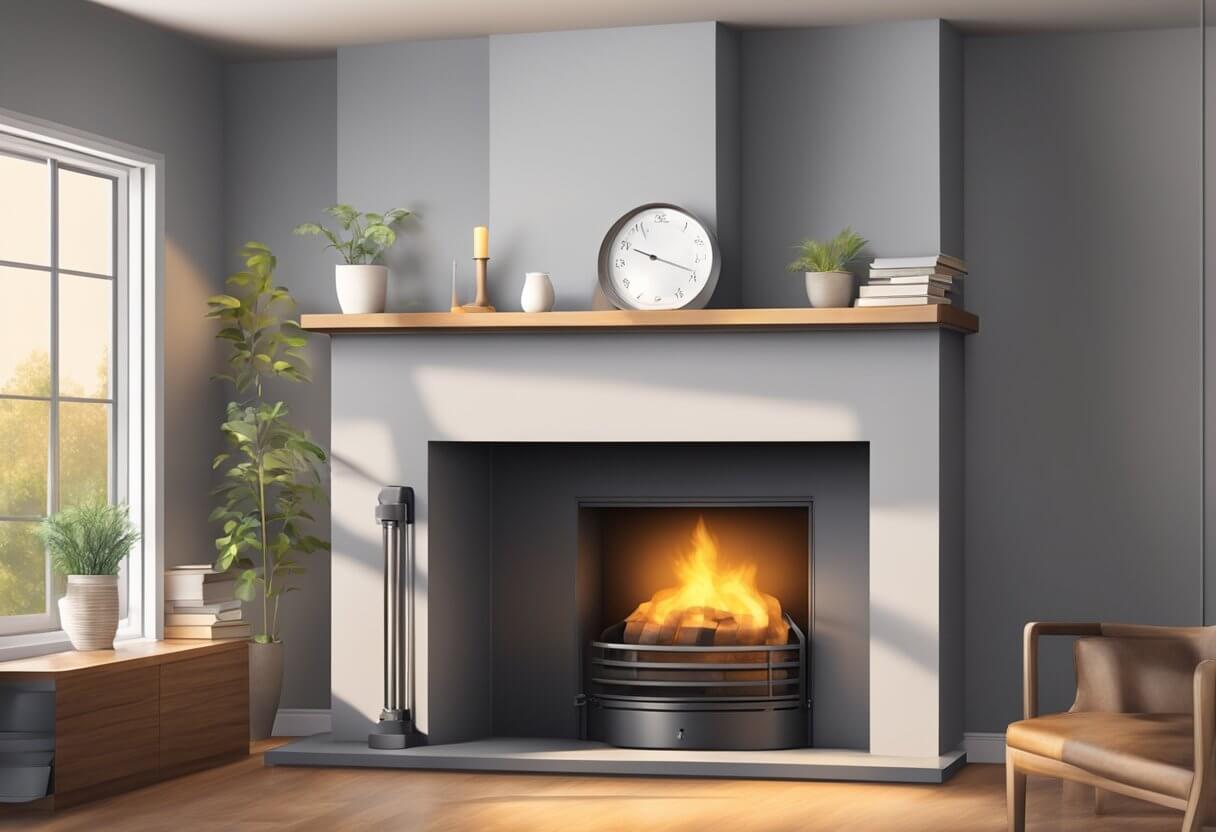Enhancing Fireplace Efficiency with Fireplace Flue Dampers: Comprehensive Tips and Techniques

Introduction
Enhancing the efficiency of your fireplace is more important than ever. One effective way to do this is by using fireplace flue dampers. A fireplace flue damper acts as a seal to prevent warm air from escaping your home when the fireplace is not in use. This means less energy is wasted, and your home stays warmer for longer.
There are different types of fireplace flue dampers, including throat dampers and top-sealing dampers, each having its benefits. Proper installation and maintenance are crucial for ensuring these dampers work efficiently. Additionally, understanding how to use and operate them correctly can make a significant difference in your home’s heat retention and energy bills.
We’ll cover all aspects of using fireplace flue dampers to maximize your fireplace’s efficiency. From selecting the right type of damper to advanced tips on enhancing their performance, we’ll help you make the most of your fireplace.
Key Takeaways
- Using a flue damper enhances fireplace efficiency.
- Proper installation and maintenance are crucial.
- Correct operation maximizes heat retention and energy savings.
Understanding Fireplace Flue Dampers
Fireplace flue dampers play a critical role in maintaining energy efficiency and safety in our homes. We’ll explore how they function, the different types available, and the key components that make them work effectively.
The Role of a Damper in Fireplace Efficiency
A damper helps control the airflow and temperature in the chimney, directly impacting the efficiency of the fireplace. When the damper is open, it allows smoke, gases, and heat to escape, preventing them from entering our home.
When the fire is out, closing the damper seals the chimney, stopping cold air from coming in and warm air from escaping. This makes our heating system more energy-efficient by reducing heat loss through the chimney.
Types of Dampers: Throat vs Top-Sealing
There are two main types of fireplace dampers: throat dampers and top-sealing dampers.
Throat dampers are found at the base of the chimney. They are often made of metal and are closed and opened using a handle inside the fireplace. These dampers are effective but can wear down over time due to exposure to heat and smoke.
Top-sealing dampers are installed at the top of the chimney. They are usually made of stainless steel or aluminum. Operated by a cable running down the chimney to the fireplace, these dampers provide a better seal, significantly improving energy efficiency by keeping out rain, debris, and animals.
Components of a Flue Damper
Flue dampers consist of several key components that ensure they work correctly.
The damper plate is the main barrier that opens and closes to control air flow. It’s usually made of metal or ceramic materials to withstand high temperatures.
The frame supports the damper plate and is attached to the chimney walls. It must be sturdy to hold the damper plate effectively.
The control mechanism is the part we interact with to open or close the damper. For throat dampers, this might be a handle or a knob. For top-sealing dampers, it’s typically a cable system.
Proper understanding of these components helps us maintain and operate our fireplace dampers more effectively. For more detailed information, check out this Fireplace Damper Guide.
The Benefits of Using Fireplace Flue Dampers
Using fireplace flue dampers brings several important advantages, including reducing heat loss and saving energy as well as improving air quality and safety.
Reducing Heat Loss and Saving Energy
Fireplace flue dampers are essential for maintaining energy efficiency in our homes. When the damper is closed, it seals off the fireplace, preventing warm air from escaping through the chimney. This reduces heat loss, making heating more cost-effective.
By keeping the damper shut when the fireplace is not in use, we can save on heating bills. This simple action can greatly improve the overall energy efficiency of our homes.
Modern dampers, such as top-sealing ones, provide an even better seal compared to traditional throat dampers. They act as a barrier against cold air, keeping our homes warmer during winter. In turn, this allows our heating systems to work less, conserving energy.
Improving Air Quality and Safety
Fireplace flue dampers also play a significant role in improving air quality and ensuring safety. When the damper is open during use, it allows harmful smoke and gases, like carbon monoxide, to escape safely outside. This helps prevent carbon monoxide poisoning and keeps the indoor air cleaner.
Moreover, using a damper properly helps control airflow, ensuring that fires burn more efficiently. Proper airflow minimizes the risk of creosote buildup, which is a byproduct of burning wood and can lead to dangerous chimney fires.
Regular checking and maintaining of damper seals are important safety considerations. A well-sealed damper when not in use stops outside debris, rain, and pests from entering the chimney, further enhancing the safety and cleanliness of our fireplaces.
By focusing on these aspects, we ensure that our fireplaces remain both safe and efficient, giving us peace of mind while enjoying their warmth.
Installation and Maintenance of Fireplace Dampers
Proper installation and routine maintenance of fireplace dampers ensure safe and efficient operation. This section details professional installation, routine maintenance, and common issues to help you maximize the longevity and performance of your fireplace dampers.
Professional Installation of Dampers
Professional installation of fireplace dampers is crucial for safety and performance. A CSIA-certified chimney sweep can ensure the damper is correctly positioned within the chimney structure. Misalignment can lead to heat loss or smoke leakage.
During installation, we need to choose between various types of fireplace dampers. Top-sealing dampers are preferred for their energy efficiency, while throat dampers are traditional and widely used. Ensuring the damper forms an airtight seal helps in maintaining indoor temperature and prevents drafts.
Routine Maintenance for Optimal Performance
Routine maintenance is essential to keep fireplace dampers working effectively. We should inspect the damper at least once per season, ideally before the start of the fireplace use. Regular inspection helps identify any wear and tear or rust that might impair its functionality.
Cleaning the damper and chimney flue reduces the risk of creosote buildup. Employing a professional chimney sweep for annual cleaning ensures thorough and safe maintenance.
Common Issues and How to Address Them
Common issues with fireplace dampers include difficulty in opening or closing, corrosion, or improper sealing. If the damper is hard to operate, it might be due to accumulated soot or creosote. We can resolve this by cleaning the damper and its surroundings.
Corrosion is another issue, especially in high-humidity areas. Routine inspections can catch rust early, and we should address it with appropriate treatments or replacement. If the damper doesn’t seal tightly, it can lead to drafts and energy loss. Ensuring the damper’s gasket is intact and replacing it when worn can help.
For persistent problems, consulting a professional guarantees that any underlying issues are properly addressed, maintaining both efficiency and safety.
Proper Use and Operation of Fireplace Dampers
To get the best performance out of your fireplace, it’s essential to understand how to properly use and operate the damper. This involves knowing how to adjust the damper for maximum efficiency and when to open or close it based on your needs.
How to Adjust Dampers for Maximum Efficiency
Adjusting the fireplace damper is crucial for controlling airflow and maximizing efficiency. When you start the fire, the damper should be fully open. This allows maximum air to flow into the firebox, ensuring efficient combustion and minimizing smoke buildup.
Once the fire is burning well, we can partially close the damper. This reduces airflow, controlling the intensity of the fire and retaining more heat within the room. Closing the damper too much can smother the fire, so it’s important to find a balance that keeps the fire burning efficiently.
In contrast, opening the damper too much can cause excessive heat loss. Proper adjustment creates an airtight seal when needed, preventing cold air from entering and warm air from escaping when the fireplace is not in use. With a well-adjusted damper, we can achieve an optimal balance between heat retention and airflow control.
When to Open or Close Your Damper
Knowing when to open or close the damper is key to using your fireplace efficiently. Open the damper fully when starting a fire to provide adequate airflow for combustion. This helps the fire catch quickly and burns more cleanly.
Close the damper when the fireplace is not in use to create an airtight seal. This prevents warm indoor air from escaping up the chimney and cold air from coming in. It’s essential to close the damper only after the fire and any remaining embers are completely out to avoid any risks of smoke or harmful gases entering the home.
By following these steps, we can maintain better control of our home’s temperature and improve energy efficiency, ensuring our fireplace operates safely and effectively.
Advanced Tips for Enhancing Fireplace Flue Damper Efficiency
To maximize the efficiency of your fireplace flue damper, it’s important to follow specific strategies involving seasonal adjustments and supplemental devices. This section outlines practical tips for both areas to help prevent heat loss and improve your fireplace’s performance.
Seasonal Tips for Damper Usage
During the colder months, it is essential to adjust the damper to prevent heat loss. We should ensure the damper is closed when the fireplace is not in use to keep warm air indoors. Keeping the damper open only when there’s a fire burning can significantly enhance energy efficiency.
In winter, regularly check the damper for any gaps or leaks. Tight seals help maintain fireplace efficiency by preventing cold air from entering. Moisture buildup can also be an issue, so it’s crucial to keep the damper dry to maintain its durability and function.
Supplemental Devices to Improve Flue Damper Performance
Installing a top-sealing chimney damper can greatly improve the efficiency of your fireplace. Unlike traditional dampers found at the bottom of the flue, top-sealing dampers create a better seal and reduce heat loss. These dampers also protect against moisture and debris.
For further energy efficiency, consider adding a fireplace insert. Inserts are designed to capture more heat and radiate it into the room, reducing heating costs. Using these devices together provides maximum efficiency and a well-maintained fireplace system. For more detailed information, you can refer to the guide on fireplace dampers.
Frequently Asked Questions
We address common concerns about improving fireplace efficiency, from installation to maintenance and safety precautions.
How do I install a top sealing damper to improve my fireplace efficiency?
To install a top sealing damper, first measure the chimney flue accurately. Purchase a damper kit designed for your specific flue size. Clean the chimney crown thoroughly. Apply chimney adhesive to the bottom of the damper, then secure it to the crown using screws provided in the kit. Test the damper to ensure it opens and closes smoothly.
What are the signs that indicate the need for chimney damper replacement?
If you notice drafts, inefficient burning of wood, or difficulty in opening and closing the damper, it may be time to replace it. Rust or corrosion on the damper is another clear sign. Unusual noises, such as squeaking, during operation can also indicate that the damper needs attention.
Can a fireplace flue damper significantly reduce heating costs?
Yes, a well-functioning damper can significantly reduce heating costs. When the fireplace is not in use, a closed damper prevents warm air from escaping your home and cold air from entering. This helps maintain a more stable indoor temperature, reducing the need for extra heating.
What is the correct way to adjust the fireplace damper for maximum efficiency?
For maximum efficiency, open the damper fully before starting a fire. Once the fire is well-established, partially close the damper to minimize heat loss while still allowing smoke to escape. Always ensure there’s enough airflow to sustain combustion and avoid smoke buildup in your home.
What are the safety considerations when operating a fireplace with a flue damper?
Always check that the damper is open before lighting a fire to prevent smoke and gases from entering your home. Regularly inspect the damper for any signs of damage or blockage. Never close the damper while the fire is still burning or smoldering, as this can cause dangerous levels of carbon monoxide to accumulate.
How often should maintenance be performed on fireplace dampers for optimal performance?
We recommend inspecting and cleaning the damper at least once a year. This can be done during your annual chimney inspection. Regular maintenance helps ensure the damper operates efficiently and extends its lifespan, preventing costly repairs or replacements.

 We Ship Anywhere USA & Canada
We Ship Anywhere USA & Canada







